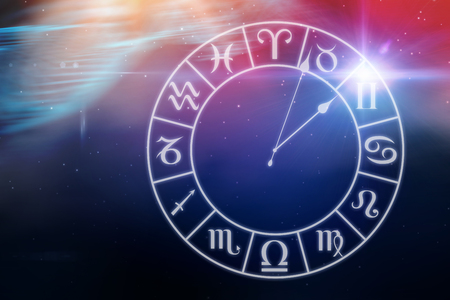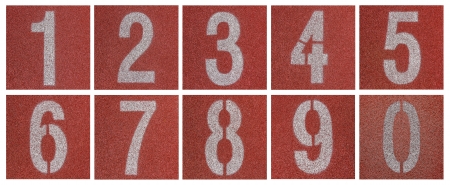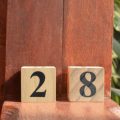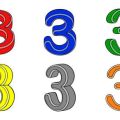Introduction to the Chinese Zodiac
The Chinese Zodiac, known as “Sheng Xiao” (生肖) in Mandarin, is a fascinating system that dates back over two thousand years. Unlike the Western zodiac, which is based on constellations and planetary positions, the Chinese Zodiac follows a twelve-year cycle, with each year represented by an animal sign: Rat, Ox, Tiger, Rabbit, Dragon, Snake, Horse, Goat, Monkey, Rooster, Dog, and Pig. Each animal sign is believed to influence the personality traits and destiny of individuals born in that year. In recent years, Americans have become increasingly interested in the Chinese Zodiac—not just for its rich cultural history but also for its unique way of offering insight into personal strengths, relationships, and life opportunities. The popularity of Eastern philosophies like feng shui and astrology in the United States has made the Chinese Zodiac more accessible than ever before. By understanding the roots and significance of this ancient system, you can discover a new layer of self-awareness and even connect with a tradition celebrated by millions around the world.
Gathering Your Birth Information
Before you can create an accurate Chinese Zodiac birth chart, its essential to collect precise birth details. Unlike Western astrology, which usually focuses on your sun sign, the Chinese Zodiac system—known as BaZi or Four Pillars of Destiny—requires very specific information. Below, youll find what you need and tips to ensure everything is correct for a truly personalized reading.
What Birth Details Are Needed?
The accuracy of your Chinese Zodiac birth chart depends on four key pieces of information:
| Detail | Description | Why Its Important |
|---|---|---|
| Date of Birth | Month, day, and year (MM/DD/YYYY) | Determines your year, month, and day pillar in the chart |
| Exact Time of Birth | Hour and minute (AM/PM) | The hour pillar changes every two hours; even a small mistake can alter your chart significantly |
| Place of Birth | City and state (or country if born outside the U.S.) | This affects time zone adjustments and Daylight Saving Time corrections for accuracy |
| Gender at Birth | Male or Female | Certain interpretations in Chinese metaphysics consider gender when analyzing luck cycles |
How to Ensure Accuracy
- Check Official Records: Use your birth certificate or ask family members for details. Hospitals in the U.S. often record exact birth times.
- Time Zone Matters: If you were born in the U.S., note whether your birth date was during Daylight Saving Time. Adjust accordingly for accuracy.
- If Unsure: Try to get as close as possible. Some Americans use “around noon” if they don’t know their exact time, but this may reduce the charts precision.
- Place Specificity: The city and state help pinpoint local solar time for your birth hour, which is important for traditional calculations.
Quick Reference Table: Birth Info Checklist for Americans
| Step | Your Info Example (for reference) |
|---|---|
| Date of Birth | 07/04/1990 |
| Time of Birth | 2:45 PM (Central Time, DST applied) |
| Place of Birth | Austin, Texas, USA |
| Gender at Birth | Female |
This careful attention to detail will set a solid foundation for building your own Chinese Zodiac birth chart with confidence and authenticity as you continue through the next steps.

3. Understanding the Twelve Zodiac Animals
When creating a Chinese Zodiac birth chart, it’s essential to understand the twelve zodiac animals and what each represents. In Chinese astrology, these animals—Rat, Ox, Tiger, Rabbit, Dragon, Snake, Horse, Goat, Monkey, Rooster, Dog, and Pig—cycle every twelve years. Each animal is believed to influence personality traits and destiny in unique ways. The cycle also interacts with the five elements (Wood, Fire, Earth, Metal, Water), creating a dynamic system that shapes an individual’s cosmic blueprint.
The Meaning Behind Each Animal Sign
Each zodiac animal carries specific symbolic meanings based on traditional Chinese culture. For example:
- Rat: Resourceful and quick-witted
- Ox: Hardworking and reliable
- Tiger: Brave and confident
- Rabbit: Gentle and compassionate
- Dragon: Charismatic and energetic
- Snake: Wise and intuitive
- Horse: Free-spirited and enthusiastic
- Goat: Artistic and peaceful
- Monkey: Clever and playful
- Rooster: Observant and hardworking
- Dog: Loyal and honest
- Pig: Generous and sincere
The Zodiac Cycle Explained for Americans
The Chinese zodiac functions differently from Western astrology. Rather than focusing on star constellations or monthly cycles, the animal sign is determined by your birth year according to the lunar calendar. This means two people born in different years but on the same month could have completely different signs. Understanding this helps you see how the cycle repeats every twelve years, influencing generations differently.
Zodiac Compatibility and Life Events
Your zodiac sign not only shapes your personality but also plays a role in compatibility with others—whether friends, family, or romantic partners. In American culture, this adds a new layer of insight similar to “sun sign compatibility” but with unique Eastern characteristics. As you create your birth chart, knowing your animal sign’s strengths and weaknesses can help you make more informed choices about relationships and life decisions.
4. Navigating the Heavenly Stems and Earthly Branches
When creating a Chinese Zodiac birth chart, one of the most essential steps is understanding the Heavenly Stems and Earthly Branches. These concepts are unique to Chinese metaphysics and serve as the foundation for decoding your personal destiny, much like how Americans might use sun signs or moon phases in astrology. Here’s a breakdown of what they mean and how you can apply them to your own chart.
What Are Heavenly Stems?
The Heavenly Stems (天干, Tiāngān) are a set of ten elements that rotate in cycles. Each Stem is associated with one of the five classical elements—Wood, Fire, Earth, Metal, and Water—each appearing in both a Yin and a Yang form. Understanding these is crucial because every year, month, day, and hour in your birth chart will be assigned a specific Stem.
| Stem Number | Chinese Name | Element | Yin/Yang |
|---|---|---|---|
| 1 | Jia (甲) | Wood | Yang |
| 2 | Yi (乙) | Wood | Yin |
| 3 | Bing (丙) | Fire | Yang |
| 4 | Ding (丁) | Fire | Yin |
| 5 | Wu (戊) | Earth | Yang |
| 6 | Ji (己) | Earth | Yin |
| 7 | Geng (庚) | Metal | Yang |
| 8 | Xin (辛) | Metal | Yin |
| 9 | Ren (壬) | Water | Yang |
| 10 | Gui (癸) | Water | Yin |
The Earthly Branches Explained
The Earthly Branches (地支, Dìzhī) make up a cycle of twelve symbols, each corresponding to an animal in the Chinese zodiac as well as a specific element and season. These branches are assigned to every year, month, day, and hour in your birth chart.
| No. | Name (Pinyin/Chinese) | Zodiac Animal | Main Element Association | Season Influence* | ||||||||
|---|---|---|---|---|---|---|---|---|---|---|---|---|
| 1 | Zǐ / 子 | Rat | Water | Winter | ||||||||
| 2 | Chǒu / 丑 | Ox | Earth | Latter Winter | ||||||||
| 3 | Yín / 寅 | Tiger | Wood | E. Spring | ||||||||
| 4 | Mǎo / 卯 | Rabbit | Wood | E. Spring | ||||||||
| 5 | Chén / 辰 | Dragon | Earth | Latter Spring | ||||||||
| 6 | Sì / 巳 | Snake | Fire | E. Summer | ||||||||
| 7 | wǔ / 午 | Horse | Fire | Midsummer | ||||||||
8| **Seasons are based on traditional East Asian seasonal associations.*Seasons are based on traditional East Asian seasonal associations.*Seasons are based on traditional East Asian seasonal associations.*Seasons are based on traditional East Asian seasonal associations.*Seasons are based on traditional East Asian seasonal associations.*Seasons are based on traditional East Asian seasonal associations.*Seasons are based on traditional East Asian seasonal associations.*Seasons are based on traditional East Asian seasonal associations.*Seasons are based on traditional East Asian seasonal associations.*Seasons are based on traditional East Asian seasonal associations.*Seasons are based on traditional East Asian seasonal associations.*Seasons are based on traditional East Asian seasonal associations. | Their Role in Your Birth Chart: The Four Pillars System (BaZi)Your Chinese Zodiac birth chart is built upon four key “pillars”: Year, Month, Day, and Hour. Each pillar consists of a pair—one Heavenly Stem and one Earthly Branch. These pairs encode not just your animal sign but also your elemental influences and life trends. For example:
| |||||||||||


